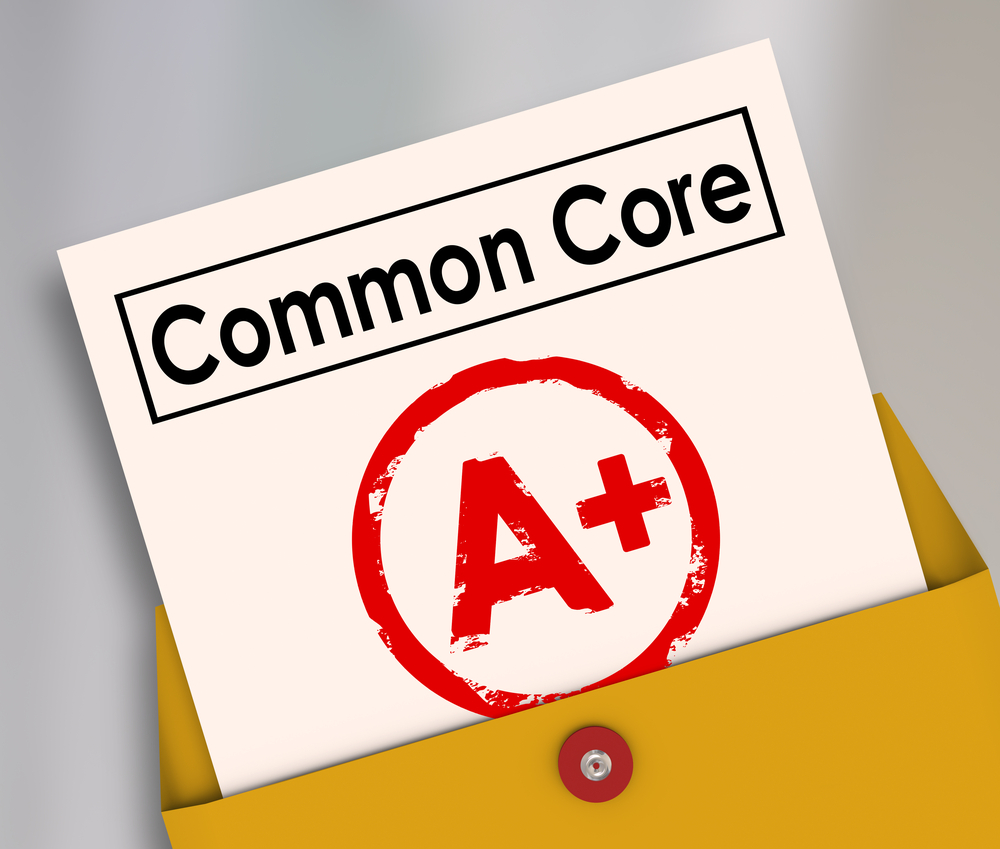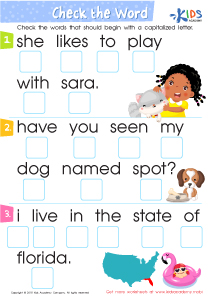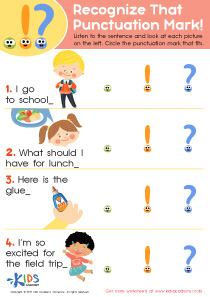Syllable identification Normal Writing Worksheets for Ages 7-9
5 filtered results
-
From - To
Enhance your child's writing skills with our Syllable Identification Normal Writing Worksheets for Ages 7-9! These engaging, interactive resources focus on helping young learners recognize and count syllables in words, which is crucial for developing strong literacy skills. With a variety of fun activities, students will practice breaking down words into syllables, improving their phonemic awareness and spelling abilities. Each worksheet is thoughtfully designed to support different learning styles, ensuring your child stays motivated and eager to learn. Perfect for at-home practice or in the classroom, these worksheets provide an enjoyable way for children to master syllable identification. Start their literacy journey today!
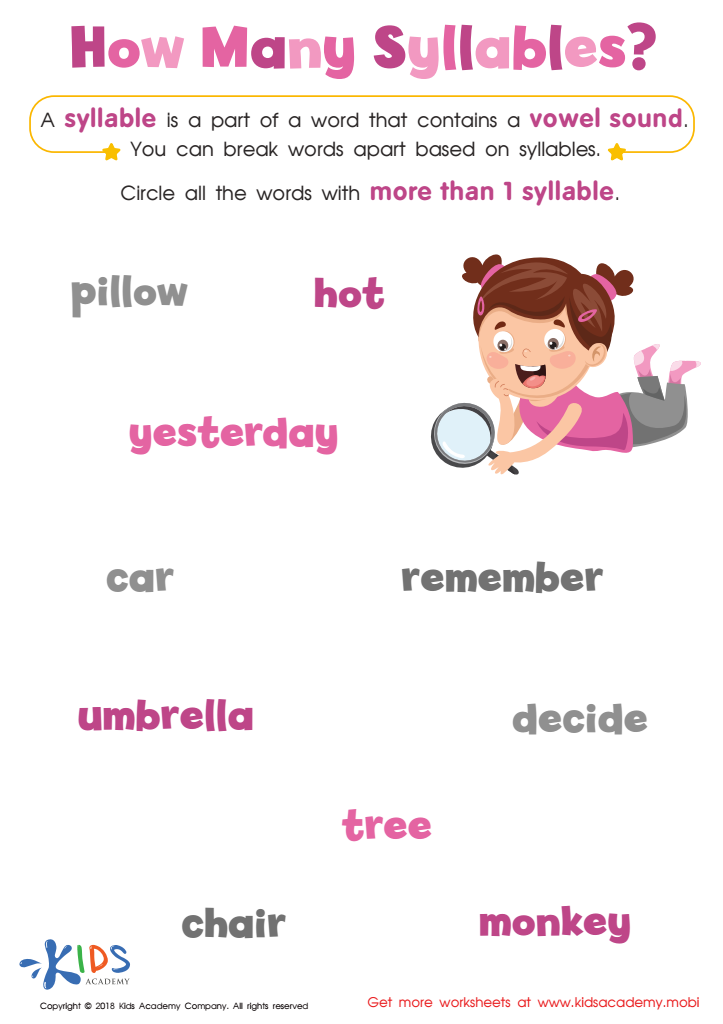

Reading: How Many Syllables Worksheet
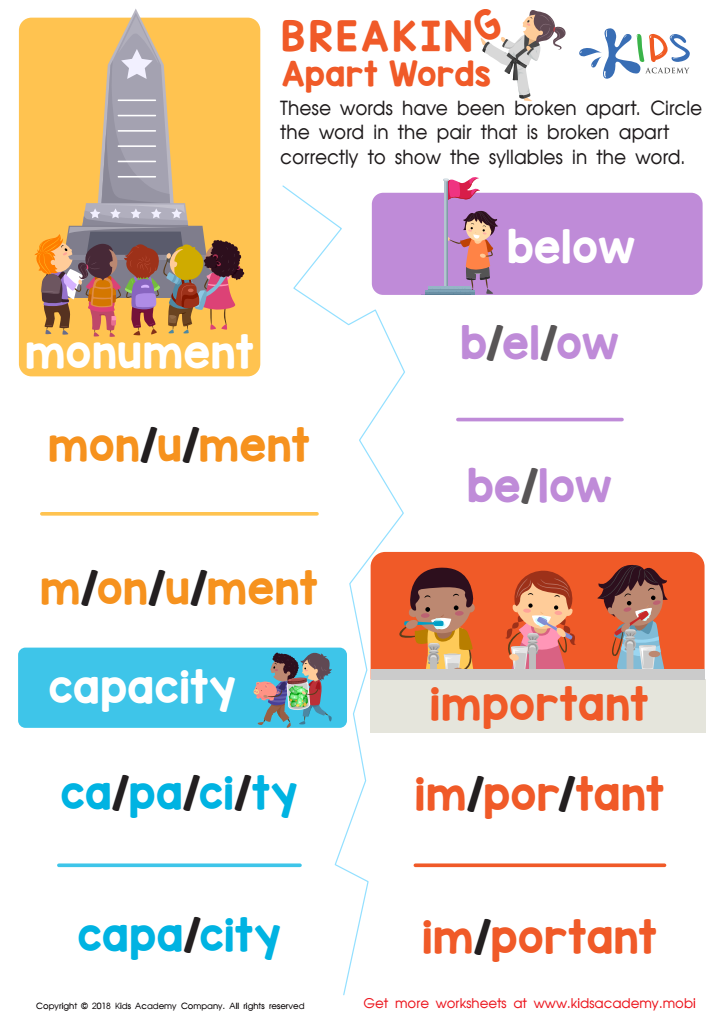

Breaking Apart Words Worksheet
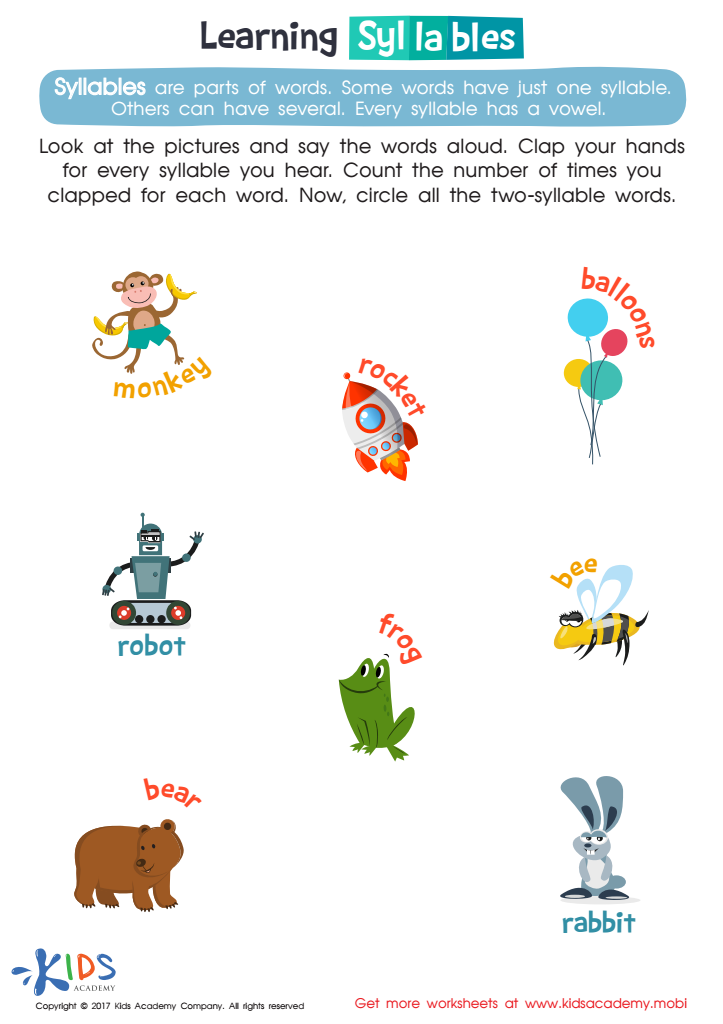

Learning Syllables Word Structure Worksheet


Open Syllable Printable Worksheet
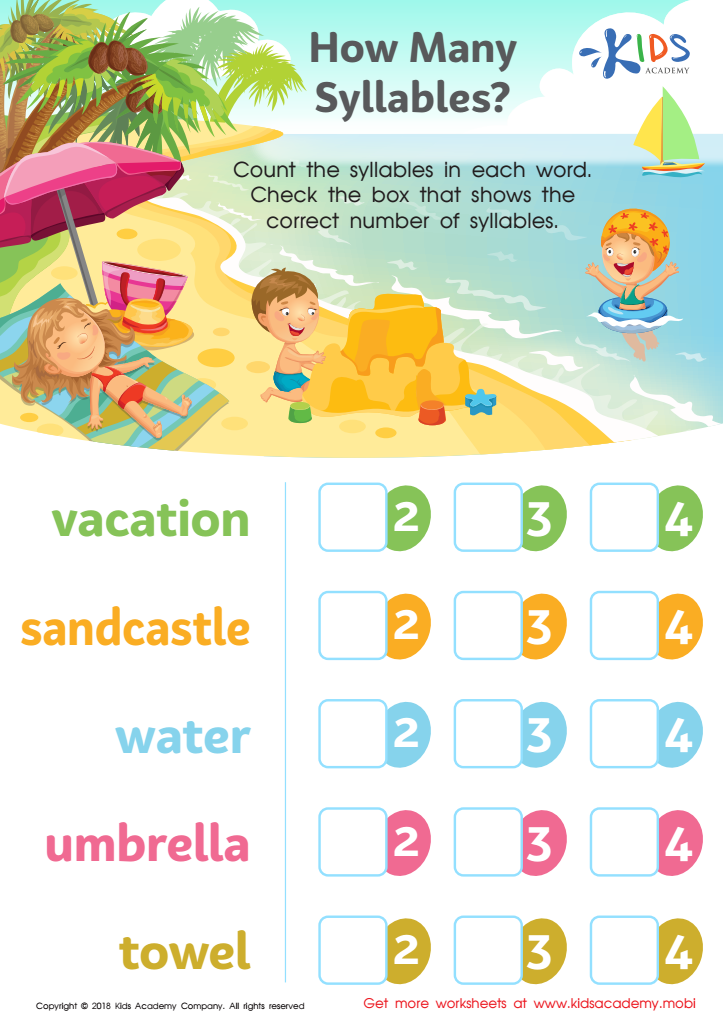

How Many Syllables Worksheet
Syllable identification is a fundamental skill for children ages 7 to 9, and it plays a crucial role in their overall literacy development. At this age, students are building on their reading and writing foundations, so understanding syllables becomes essential for fluency and comprehension. Recognizing syllables aids in decoding words, allowing children to break down complex words into manageable parts, thereby enhancing their reading abilities.
Moreover, syllable identification supports spelling skills. Children who grasp syllable structures can apply this knowledge to spell words more accurately, as it teaches them to listen to sounds and syllabicate words effectively. This skill also fosters an awareness of language patterns, making it easier for students to tackle unfamiliar vocabulary.
For parents and teachers, prioritizing syllable identification can significantly improve a child's confidence and enjoyment in reading and writing. Encouraging activities like clapping or tapping out syllables while reading introduces an engaging, multisensory element to learning. As children become adept at this skill, they are likely to perform better academically, paving the way for lifelong literacy proficiency. In summary, caring about syllable identification is essential for nurturing children’s essential reading, writing, and language skills during these formative years.
 Assign to My Students
Assign to My Students








